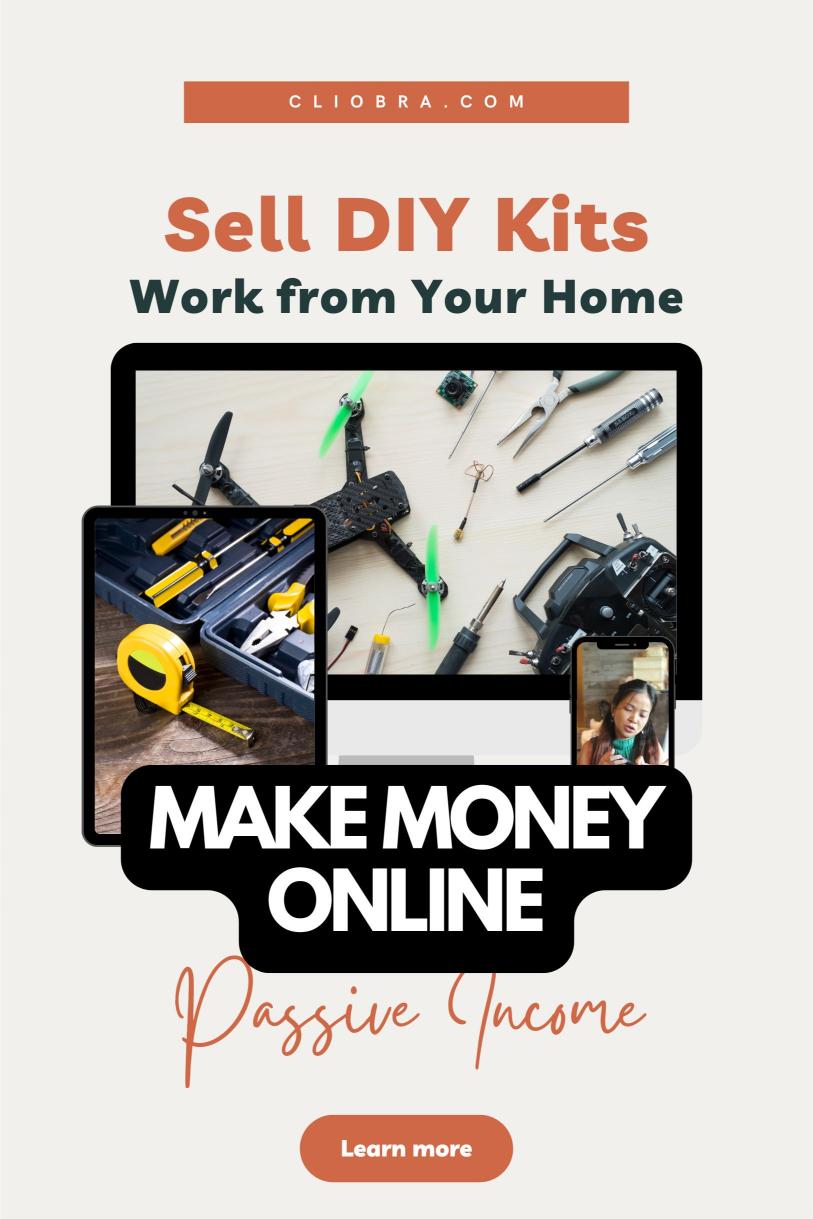Last Updated on October 14, 2024 by Arif Chowdhury
Ever felt like your craft hobby could be more than just a weekend thing?
You’re not alone.
Tons of people are turning their passion projects into legit income streams.
Here’s the kicker: DIY kits are blowing up right now.
According to a recent market report, the global DIY market is expected to reach $1.36 billion by 2025, growing at a CAGR of 5.6% from 2020 to 2025.
Let’s dive into how you can grab a slice of this pie.
Why DIY Kits Are Hot
People love making stuff.
But they don’t always have the time or know-how to start from scratch.
That’s where you come in.
You’re not just selling a product; you’re selling an experience.
A chance for someone to feel accomplished, creative, and proud.
And hey, in a world where screen time is through the roof, hands-on activities are like gold.
Getting Started: What You Need
- A craft you’re good at
- Basic packaging materials
- A way to take online payments
- A platform to sell on (Etsy, your own website, etc.)
- A smartphone for photos and videos
That’s it. No fancy equipment needed.
Start small, test the waters, and scale up as you go.
Picking Your Niche
Don’t try to be everything to everyone.
Pick a lane and own it.
Some hot DIY kit ideas:
- Candle making
- Soap crafting
- Macramé plant hangers
- Leather wallet kits
- Terrarium building sets
Pro tip: Look for trends on Pinterest and Instagram.
What are people DIY-ing like crazy right now?
Pricing Strategy: The Sweet Spot
Here’s where most people mess up.
They price too low, thinking it’ll attract more buyers.
Wrong move.
Price for profit, not just sales.
Factor in:
- Cost of materials
- Your time (yes, it’s valuable)
- Packaging
- Shipping
- Platform fees
Aim for a 3-5x markup on your costs.
Sounds high? It’s not.
People pay for quality and experience.
Creating Your Kit: Make It Foolproof
Your kit should be so easy to use, a 10-year-old could do it.
(Unless you’re targeting advanced crafters, then ignore that.)
Include:
- Clear, step-by-step instructions
- All necessary materials
- Tools if needed
- Tips for customization
Bonus: Add a QR code linking to a video tutorial.
People love that extra touch.
Photography: It’s Everything
Online, your photos are your storefront.
Bad pics = no sales.
You don’t need a fancy camera.
A smartphone and good lighting will do.
Show:
- The finished product
- What’s inside the kit
- Someone using the kit (action shots sell)
Description: Tell a Story
Don’t just list what’s in the box.
Paint a picture of the experience they’ll have.
“Transform your living room into a cozy oasis with this macramé plant hanger kit. Perfect for a relaxing Sunday afternoon project.”
Use keywords naturally. Don’t stuff them in.
Building Your Brand: Stand Out
You’re not just selling kits. You’re building a brand.
Give it personality.
Maybe you’re the eco-friendly option, using all sustainable materials.
Or the luxury craft kit, with premium supplies.
Find your angle and lean into it.
Marketing: Get Seen
Social media is your best friend here.
Instagram and TikTok are goldmines for craft content.
Post regularly:
- Tutorials
- Behind-the-scenes of kit making
- Customer creations (with permission)
Engage with your followers. Build a community.
Customer Service: Go Above and Beyond
Happy customers = repeat buyers and word-of-mouth marketing.
Respond quickly to questions.
Fix problems without hesitation.
Consider including a handwritten note in each kit.
Small touches make a big difference.
Scaling Up: From Side Hustle to Full-Time Gig
Start with one or two kit types.
Perfect your process.
Then expand.
As orders increase, consider:
- Hiring help for packaging
- Outsourcing some material prep
- Automating parts of your process
But never compromise on quality.
The Numbers Game: Making $5,200 a Month
Let’s break it down:
Say your kits sell for $50 each (a reasonable price for many DIY kits).
To make $5,200, you need to sell 104 kits a month.
That’s about 3-4 kits a day.
Totally doable with the right strategy and consistent effort.
Real Talk: It’s Not Always Smooth Sailing
Some months will be slow.
You’ll make mistakes.
That’s normal.
Learn, adjust, and keep pushing.
Success Story: From Hobby to Six Figures
Sarah started making candle kits as a way to use up extra supplies.
She sold 10 kits her first month on Etsy.
Fast forward two years, she’s shipping 500+ kits a month and just hired her first employee.
Her secret? Consistency and listening to customer feedback.
Staying Legal: Don’t Skip This
Check local regulations about selling homemade products.
Get proper insurance.
Keep good records for taxes.
Boring? Maybe. But crucial for long-term success.
Environmental Responsibility: A Selling Point
Customers care about this stuff.
Use eco-friendly packaging where possible.
Offer refill kits to reduce waste.
It’s good for the planet and your brand image.
The Future of DIY Kits: What’s Next?
Stay ahead of trends.
Consider:
- Subscription boxes
- Collaborative kits (partner with artists or brands)
- Virtual workshops paired with your kits
The possibilities are endless.
Final Thoughts: Just Start
You don’t need it all figured out to begin.
Start small, learn as you go.
The craft market isn’t slowing down.
In fact, a survey by the Association for Creative Industries found that 63% of US households participated in at least one crafting project in the past year.
There’s room for you in this market.
Your unique skills and perspective are valuable.
So, what are you waiting for?
Turn that hobby into a hustle.
Your future customers are out there, just waiting to discover your awesome DIY kits.
